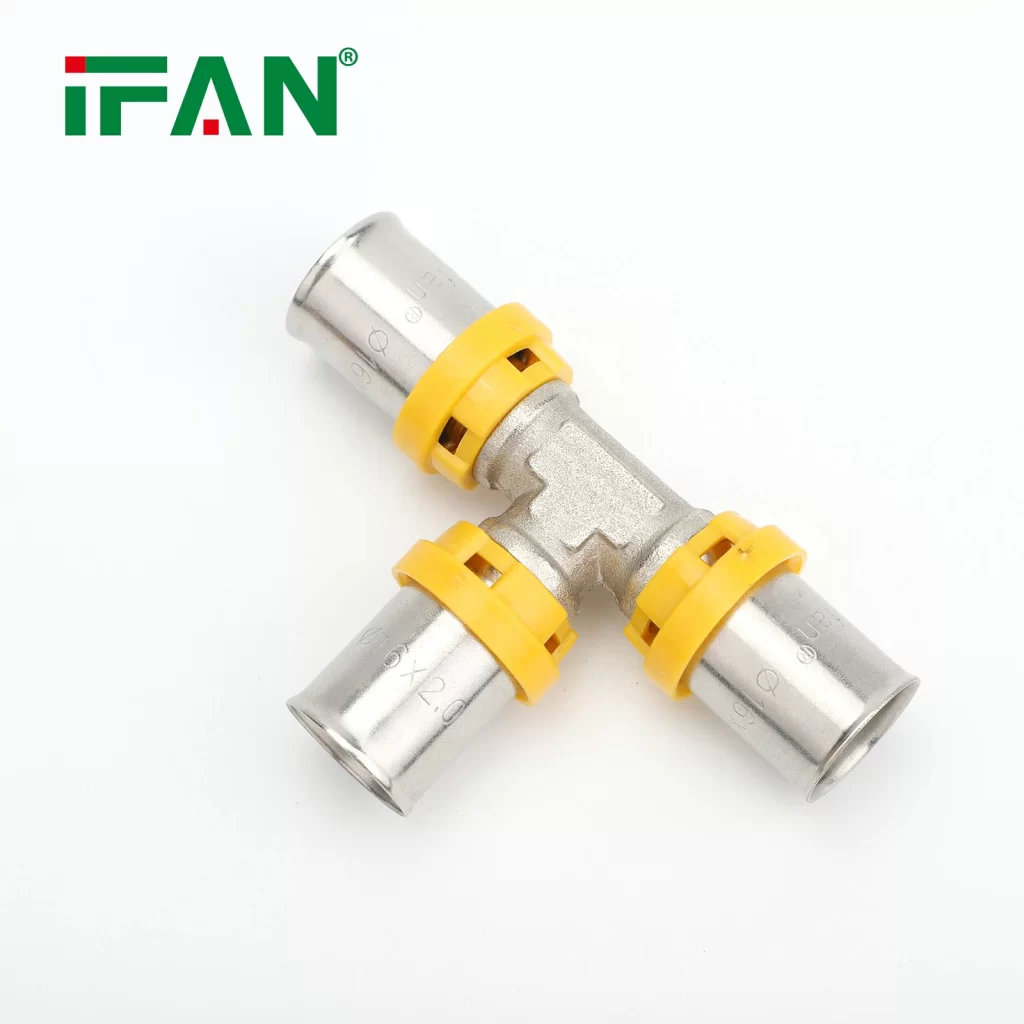Introduction
Navigator, a leading manufacturer of pipeline solutions, has recently unveiled its new range of rubber-lined pipeline clamps designed for vibration dampening and thermal expansion control. While these clamps serve an important role in traditional piping systems, many contractors are now comparing them to modern PEX press fitting technology for various applications.
In this comprehensive guide, we’ll examine:
- Key features of Navigator’s new rubber-lined clamps
- How they compare to PEX press fittings in different scenarios
- Installation considerations for both systems
- Which solution works best for specific plumbing needs
Navigator’s Rubber-Lined Clamps: Key Features

1. Vibration & Noise Reduction
- EPDM rubber lining absorbs pipe movement
- Stainless steel housing prevents corrosion
- Reduces water hammer effects by 60% vs. rigid mounts
2. Thermal Expansion Management
- Accommodates ±5mm axial movement
- Maintains seal during -40°F to 250°F temperature swings
- Prevents stress on pipe joints
3. Universal Compatibility
- Works with:
- Copper (Type L/K/M)
- Steel (Schedule 40/80)
- CPVC (up to 2″)
PEX Press Fittings: The Modern Alternative
Advantages Over Traditional Clamp Systems
| Feature | PEX Press Fittings | Rubber-Lined Clamps |
|---|---|---|
| Install Speed | ⚡ 30 sec per joint | 🕒 5+ min per clamp |
| Movement Accommodation | Built-in flexibility | Requires sliding clamps |
| Corrosion Resistance | Complete immunity | Metal parts can oxidize |
| System Weight | 70% lighter | Heavy steel construction |
| Best For | Residential/commercial plumbing | Industrial vibration control |
Where PEX Press Fittings Excel
✔ Hydronic heating systems
✔ Potable water distribution
✔ Retrofit projects requiring minimal structural support
✔ Freeze-resistant plumbing in cold climates
Installation Comparison
Navigator Clamps
- Position pipe in correct alignment
- Slide rubber liner over pipe
- Bolt stainless housing around liner
- Torque to 8-10 Nm (varies by size)
- Check for proper compression
PEX Press Fittings
- Cut PEX tubing squarely
- Insert into press fitting
- Position press tool jaws
- Activate tool (1-2 second process)
- Verify uniform press ring
Time Savings: PEX pressing is 6-8x faster per connection
Cost Analysis: First-Year Ownership
| Cost Factor | PEX Press System | Rubber-Clamped System |
|---|---|---|
| Material Cost (100ft system) | $420 | $580 |
| Install Labor (10hr rate) | $600 | $1,200 |
| Tool Investment | $1,200 (press tool) | $200 (torque wrench) |
| Year 1 Total | $2,220 | $1,980 |
Note: PEX becomes cheaper after Year 1 due to zero maintenance requirements
5 Signs You Should Choose PEX Press Fittings Instead
- Project involves frequent directional changes (fewer fittings needed)
- Working in tight spaces where clamp bolts are inaccessible
- System requires hygiene certification (no rubber contact with water)
- Budget allows for initial tool investment
- Future modifications are likely (PEX is easier to reconfigure)
When Rubber-Lined Clamps Are Still Essential
✔ High-vibration environments (pump stations, industrial plants)
✔ Steam line applications exceeding PEX temperature limits
✔ Existing metal pipe retrofits where PEX isn’t compatible
Frequently Asked Questions (FAQs)
1. Can PEX press fittings handle vibration like rubber clamps?
✅ Yes, but differently – PEX’s inherent flexibility absorbs vibration without needing dampeners
2. Do Navigator clamps work with PEX tubing?
⚠️ Not recommended – Clamp pressure can deform PEX over time
3. Which system has better longevity?
📅 PEX press (50+ years) vs clamps (20-30 years before rubber degrades)
4. Are press tools required for Navigator clamps?
❌ No – Just a torque wrench for proper installation
5. Can I combine both systems in one project?
⚙️ Yes – Use clamps for main line anchors, PEX press for branching





